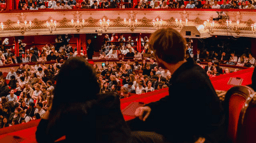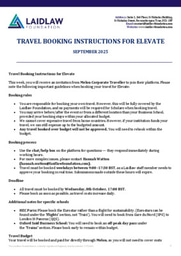Makesense LIA in Colombia Reflection
My six weeks in Colombia can only be described as one of the most incredible and unforgettable experiences I have ever had. I was given the opportunity to meet wonderful people and to experience things and places I never could have imagined. I was able to work with my incredible teammates Jeho and Lia, whom I was constantly inspired by and learnt much from. I was able to gain a deeper understanding about myself as a person and to experience leadership in a concrete setting. Despite some challenges we came across, I believe our project was extremely successful and am honoured to have been able to be a part of it.
Derecho a No Obedecer x El Faro: Our Project Goals
We had three main broad goals when thinking about our project. Firstly, we were aiming to contribute towards the breakdown of the rural-urban divide evident in Medellin between the city areas and the communities high up in the mountains, of which El Faro was one of many. As an unrecognised, illegal neighbourhood made up of hundreds of families forced to settle there as a result of violence in the countryside, El Faro has no official government support. Thus, the citizens don’t have access to basic public services such as water, electricity and security. We wanted to make these issues more visible to those in the city and spread awareness about the community’s problems. Secondly, we were aiming to create a connection between academia and social movements. We wanted to mobilise students and citizens and inspire them to be more politically active. Finally and most importantly, our concrete goal was to find ways to support the community in El Faro in building community spaces and improving living standards.
Project Planning, Challenges and Objectives
Our objectives in the planning stages of our project shifted multiple times. A main objective was to ensure that the volunteers we had recruited would continue to work with the organisation. We had many meetings with various members of staff at UPB. However, we came to the conclusion that it would be more feasible to focus on the group being a DANO sub-student group rather than creating a new one in UPB, due to the lack of student clubs within the university.
Our second task was to think about the best way in which ourselves and the students could be of help to the community, whilst giving the students tasks that they would find motivating and rewarding. We split the volunteers into two groups: visibility and research. One team would work on the creation of content to be displayed to UPB to increase awareness about El Faro. The other would focus on academic research surrounding El Faro. However, we quickly came across another issue. This was due to the fact that during the initial meeting, we had been told that all the materials had been sorted for the day of the 13th August when we would all be going to El Faro to help with their community projects: namely the agroforest and community garden. However, a significant way into our project, we were told that we would be the ones organising the logistics of the project after all such as transportation, the purchasing of materials such as plants for the garden, as well as food for the meal. This meant that we shifted the groups to ‘logistics’ and ‘research’ instead. As we wanted the project to be a collaborative process, we spoke to the volunteers about what they wanted the research outcome to be. They came to the conclusion that a documentary was the most effective medium, and produced the materials needed to create this.
Outcomes
Our main outcome was the work that was done on 13th August in El Faro. 15 volunteers; a number of Laidlaw scholars; members of DANO; individuals from other barrios in Villa Hermosa and the citizens of El Faro came together to work on the community garden and agroforest and to cook for a communal meal. In the community garden, we planted various different types of plants, irrigated the space and created the conditions for the plants to thrive in. Those concentrated on the agroforest worked to close the space by building a fence around it, made with materials we had purchased. Others cooked for over seventy people so we could all eat a communal meal after the work was done. The volunteers and our team members worked hard to take photos and videos of the work in order to produce our final outcome to be published on the DANO website: the documentary of El Faro. The volunteers had also written a number of questions in order to interview Gabriel, the community leader of El Faro. A documentary plan was created and the volunteers spent the previous weeks doing preliminary research and writing a script for the documentary. Following the day, the volunteers worked hard to edit the documentary.
Having been in contact with an agricultural engineer, Daniel, in Villa Hermosa whom we met in one of our preliminary community visits and work in another community garden, Je Ho came up with the idea of using his expertise to help with El Faro’s situation. After a visit by Daniel surveying the situation in El Faro, he came up with practical solutions to help with irrigation. This irrigation system was then set up following our departure.
Working on our project as well as the leadership trainings and multiple visits to various locations gave me a true insight into leadership in a user-centred and empathy-focused perspective. I am truly grateful for this experience, which is one I won’t forget!





Please sign in
If you are a registered user on Laidlaw Scholars Network, please sign in
Great reflection Hannah, glad you got a lot out of this LIA.